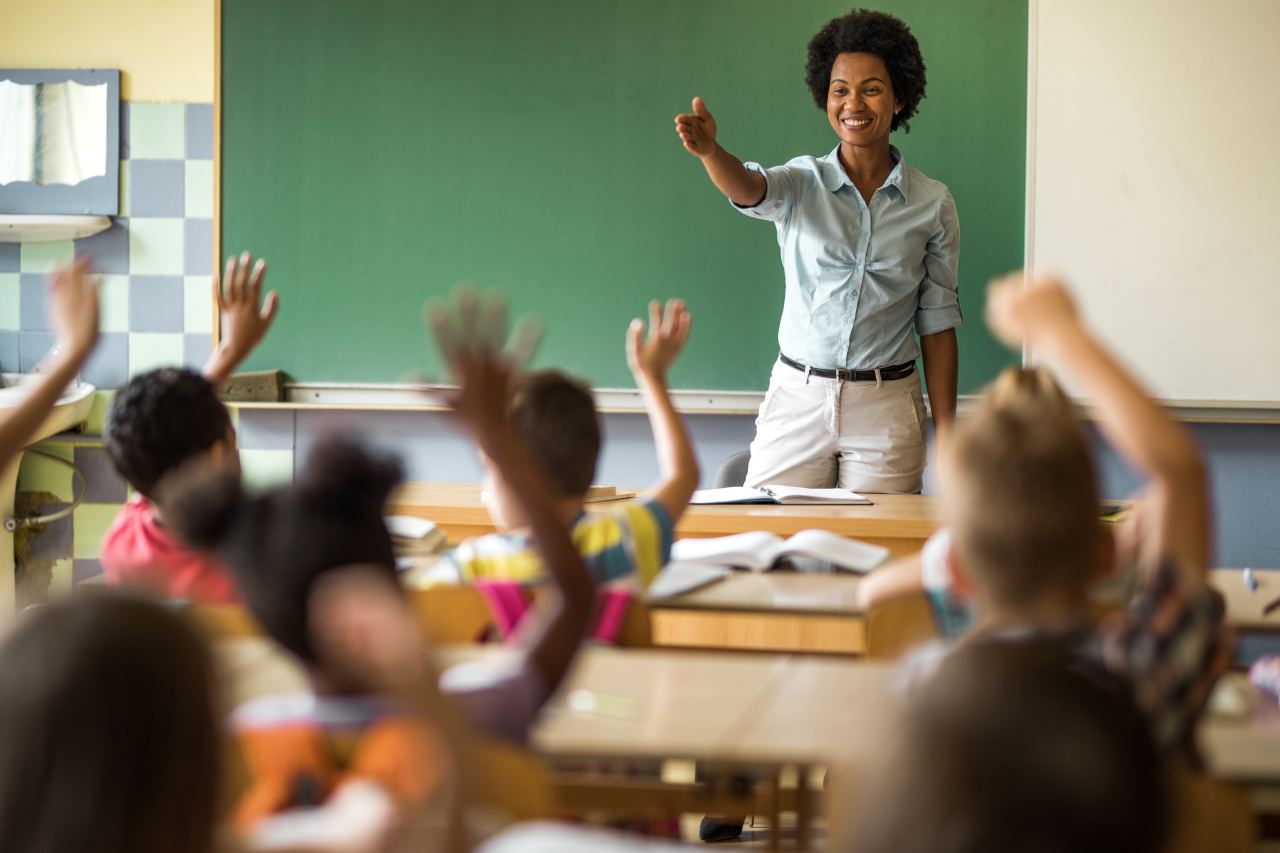Discover the Best Primary Science Tuition Singapore for Your Learning Journey
Discover the Best Primary Science Tuition Singapore for Your Learning Journey
Blog Article
A Comprehensive Overview to the Various Learning Techniques in Main Science Guideline
The exploration of diverse understanding approaches in main science direction provides a possibility for educators to enhance pupil involvement and understanding dramatically. By taking a look at hands-on understanding methods, inquiry-based techniques, and collective approaches, we can identify effective methods that deal with different discovering designs. In addition, the integration of innovation and distinguished guideline plays a critical duty in promoting an inclusive environment. Nevertheless, the concern stays: exactly how can these methods be efficiently carried out in the class to optimize their influence? The solution depends on a better examination of each method and its ramifications for training scientific research.

Hands-On Understanding Strategies
Hands-on understanding strategies play a critical function in main scientific research direction, involving trainees in active expedition and testing. These methods enable learners to engage directly with sensations and materials, fostering a much deeper understanding of clinical concepts. By utilizing manipulatives, versions, and real-life experiments, teachers create an atmosphere where pupils can observe, hypothesize, and evaluate their ideas.
Such strategies not just boost comprehension however likewise cultivate important thinking and analytical skills. When trainees join activities like building basic equipments, growing seeds, or performing chemical reactions, they are encouraged to ask questions and look for solutions via their very own monitorings. This experiential approach aids to demystify complicated scientific principles, making them a lot more obtainable and relatable.
Furthermore, hands-on learning advertises collaboration among peers, as trainees typically function in groups to carry out experiments or share searchings for. This team effort not only improves their understanding experience yet likewise creates necessary social skills. Ultimately, integrating hands-on methods in main science direction promotes a long-lasting love of understanding and inquisitiveness about the natural globe, laying a strong structure for future scholastic searches in science and beyond.
Inquiry-Based Knowing
Inquiry-based knowing is an instructional technique that encourages pupils to ask questions, explore sensations, and construct their very own understanding of scientific principles. This approach changes the emphasis from traditional teacher-led direction to a more student-centered experience, where students take the initiative in their instructional journey. By promoting interest, inquiry-based understanding promotes much deeper engagement with the product, enabling students to check out topics in a significant context.
In method, this method usually involves hands-on experiments, monitorings, and essential thinking tasks that line up closely with the clinical technique. Pupils are motivated to create theories, design investigations, and examine information, which grows crucial skills such as analytical and analytical thinking. The role of the instructor in this framework is to help with expedition, guiding students through the inquiry process while encouraging independent idea and collaboration.
Additionally, inquiry-based understanding nurtures a feeling of possession over the knowing process, inspiring pupils to pursue understanding proactively. This technique not just improves understanding of clinical principles yet likewise promotes a lifelong love for discovering, gearing up pupils with the abilities necessary to navigate a progressively intricate globe.
Collaborative Knowing Approaches
Collaborative knowing strategies encourage pupils to participate in purposeful communications with peers, fostering a common obligation for their academic outcomes. In primary scientific research guideline, these methods motivate learners to collaborate to discover scientific principles, solve issues, and perform experiments (primary science tuition Singapore). By joining team tasks, students can leverage diverse point of views, allowing for richer understanding and retention of scientific understanding
One key aspect of joint knowing is the focus on communication skills. Pupils need to verbalize their thoughts, pay attention proactively to others, and discuss ideas, all of which are vital competencies in both real-world and academic contexts. This social interaction not just improves their understanding of clinical principles however likewise advertises teamwork and problem resolution abilities.
When pupils see the worth of their payments within a team, they are a lot more likely hop over to here to take ownership of their understanding journey. Generally, including collective understanding methods in main science direction cultivates a vibrant discovering atmosphere that prepares students for future academic and social challenges.
Modern Technology Assimilation in Science
The assimilation of innovation in main science instruction enhances discovering experiences by supplying ingenious devices and sources that support different teaching methods, consisting of collaborative knowing - primary science tuition Singapore. Using digital systems, simulations, and interactive applications allows trainees to involve deeply with clinical ideas, promoting a more hands-on method to understanding
Online labs, as an example, enable learners to perform experiments safely and efficiently, advertising inquiry-based understanding. These devices can imitate real-world clinical circumstances, allowing trainees to visualize complicated procedures that would certainly be hard to reproduce in a typical class setup. Innovation promotes interaction and collaboration among students, as they can share findings and work together on jobs through on-line systems.
In addition, multimedia presentations and instructional video clips can improve lessons by dealing with diverse understanding styles, making abstract ideas more easily accessible. Data analysis devices also equip pupils to collect and analyze clinical information, reinforcing essential assuming skills. In general, the calculated unification of technology in primary science direction not just boosts engagement but also prepares pupils for a technically innovative society, furnishing them with important abilities for future clinical endeavors.
Differentiated Instruction Techniques
Separated direction strategies are vital for resolving the diverse needs of students in primary science education. These approaches make it possible for instructors to customize their mentor techniques to accommodate differing capabilities, rate of interests, and discovering designs within the classroom. By using differentiated direction, instructors can produce a comprehensive atmosphere that fosters involvement and boosts understanding of clinical ideas.
One reliable method is to use adaptable grouping, which permits students click for info to work together with peers at comparable skill degrees or with differing viewpoints. This technique urges peer knowing and promotes crucial thinking. Furthermore, supplying choices in assignments can empower pupils, allowing them to pick projects that reverberate with their passions while still satisfying curricular purposes.
In addition, including tiered assignments is another useful strategy. By creating jobs with differing degrees of you can check here intricacy, teachers can ensure that all trainees are appropriately challenged, despite their proficiency. Utilizing developmental analyses to gauge comprehending more enables educators to readjust their training techniques dynamically, ensuring that each student obtains the assistance they need.
Eventually, executing distinguished instruction techniques in main science education and learning not just improves trainee discovering outcomes however also grows a passion for science, preparing pupils for future scholastic searches.

Conclusion
In recap, efficient main science direction demands a multifaceted method that includes hands-on knowing, inquiry-based approaches, and joint techniques. The integration of innovation and set apart guideline additionally caters to diverse understanding designs, cultivating a setting favorable to exploration and important reasoning.
The expedition of diverse discovering approaches in main scientific research guideline presents a possibility for educators to improve trainee involvement and understanding considerably.Hands-on knowing strategies play a pivotal function in main scientific research instruction, engaging trainees in active expedition and experimentation.Inquiry-based understanding is an educational technique that motivates trainees to ask concerns, examine sensations, and construct their very own understanding of clinical principles.Joint understanding techniques equip pupils to involve in purposeful interactions with peers, promoting a shared obligation for their academic results. Overall, incorporating joint discovering techniques in main science guideline grows a vibrant discovering setting that prepares trainees for future academic and social difficulties.
Report this page